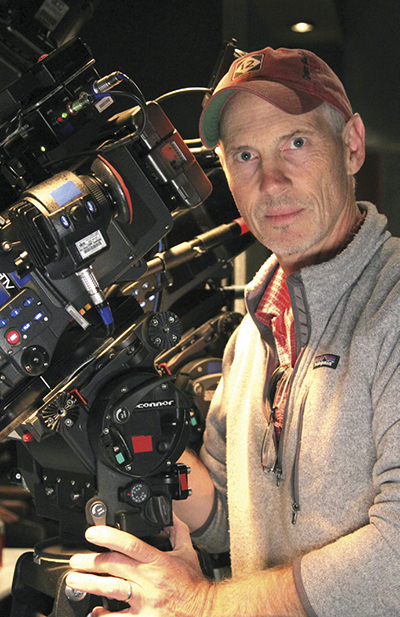OConnor Aids ‘Mixology’ Production

Mike Mayers
LOS ANGELES— I’m currently the DP on “Mixology,” a single-camera ABC comedy slated to begin airing at mid-season. The show is mostly shot “handheld,” however, in my version of “handheld” we use the same tools as any major production. We have a crane, hot head, dollies, and also OConnor heads—a pair of 2575s.
The 2575s are used any time we’re working with a longer lens—the long lens shots with a camera move. We dial in the drag settings on the 2575 very loose and this provides the sort of feeling you get with a handheld camera, even though the camera is really on a 2575 head that’s mounted on a dolly.
VERY PRECISE DRAG ADJUSTMENTS
That’s really the beauty of these OConnor heads—they’re so adjustable that we can dial the drag all the way down and move the counter spring all the way down so there’s practically no drag at all. When you do this the operator’s heartbeat is enough to make the camera move in a kind of a quirky, handheld way.
We’re shooting the show with Arri’s Alexa cameras. These aren’t huge cameras, but they’re not toys either. For lenses, I use Angenieux’s compact zooms, but I also have Fujinon 85-300s for the long end of things. And when you’re working with the Fuji zoomed out to the long end it’s nice to have a head that has some real mass to provide maximum control. You could put this camera on a smaller head, but it wouldn’t be as nice to work with.
BALANCING IN A FLASH
Any time we change a lens, batteries, or any of our configuration, we have to rebalance the head. With the 2575 this is easy to do, as it has a nice big lever that gives you a really silky smooth, fine adjustment. You just pop the thing loose, balance the camera just like you want it, and lock it back down—all done in seconds. That’s a really great feature as it makes this operation so easy to do.
It’s really an operator preference when it comes to adjusting the counterbalance spring. Actually, I like to have a little push-back when I’m operating, so I crank the spring a little on the heavy side so that it pushes back at me. My operators, Joel Schwartz and Alan Caudillo, both prefer a spring setting that allows the camera to stay wherever they leave it in the tilt range. Joel has his own 2575 and says that the head just seems to disappear when it’s correctly balanced. It’s the kind of tool that provides maximum creative flexibility without getting in the way.
I have a long history with using OConnor heads. I started as a camera assistant with the OConnor 100—which was the best head out there then—and still have very fond memories of it. However, when the newer generation came out, I thought that they were better still—fantastic really. Actually, I’ve used OConnor heads on just about everything that I’ve shot.
Mike Mayers is a director of photography for episodic television and feature films. He may be contacted atmmayers@mac.com.
For additional information, contact Oconnor at 818-847-8666 or visitwww.ocon.com.
Get the TV Tech Newsletter
The professional video industry's #1 source for news, trends and product and tech information. Sign up below.
